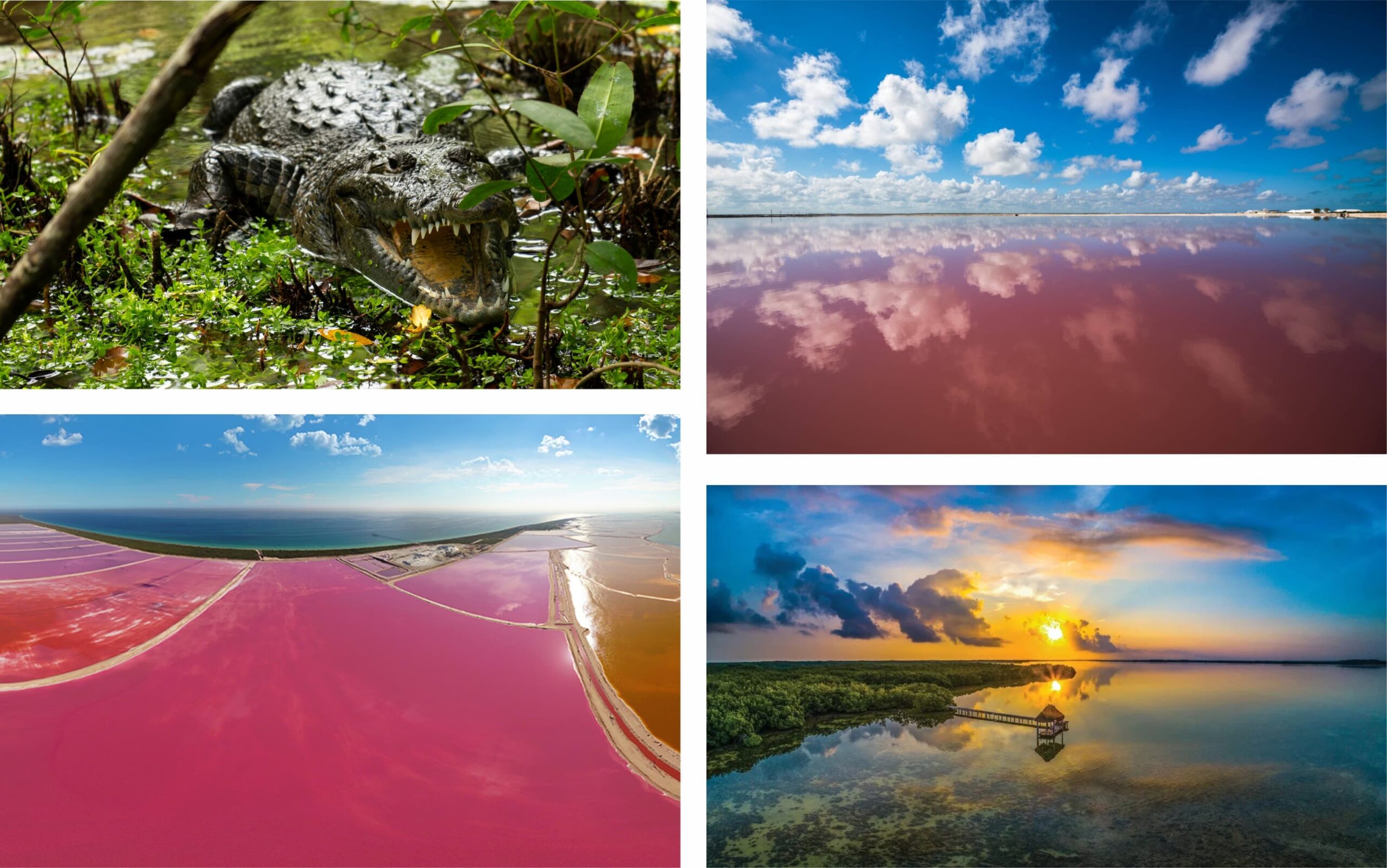Rio Lagartos is a guarded secret on the Yucatan Peninsula. It is a small fishing village on the north side of the Peninsula in the state of Yucatan. The village is the entrance to a wildlife reserve known as Ría Lagartos (Parque Natural Reserva Ría Lagartos).
Rio Lagartos is a semi-enclosed body of water, connected to the Gulf of Mexico on its western side and is a mixture of salt water from the ocean and fresh water from the land. It is full of mangroves and lots of wildlife including birds, reptiles, and many fish. The extension of the estuary is about 80 km2 with an area of 12,850 hectares.
The current territory where the nature reserve is located was part of the Ecab chiefdom in pre-Hispanic times and there was a port complex at the archaeological site of Isla Cerritos.
It is estimated that it had important commercial exchanges with regions of Guatemala, Belize, the interior of the Yucatan Peninsula, as well as Costa Rica and the southeastern United States.
Las Coloradas is a small town and has the Lagunas Rosadas from which it takes its name “Las Coloradas”.
The area is crucial for the conservation of several species. For example, its waters are the only nesting ground for the Caribbean pink flamingo and an important nesting site for turtles such as the critically endangered hawksbill turtle and the green turtle. In fact, the wetlands have a considerable number of rare, vulnerable, and endangered species, such as the Rhyncholaelia digbyana.
It is also an important resting place for migratory birds, such as the black-necked stork, which winters in the region.
The area has long been an ecotourism destination, especially related to the Caribbean flamingo population and sea turtle nesting. In the last decade there has been a 300% increase in tourism services, including hotels, restaurants, and artisanal production.
On the other hand, it has traditional fishing and salt extraction activities, which have been adjusted to sustainable practices. It also has very limited agricultural activities, where a pre-Hispanic slash-and-burn technique called ‘milpa’ is still present. The ‘milpas’ produce mainly maize, beans, squash, and peppers.
